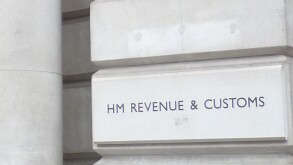
|
Cynthia Herman |
Despite widespread rumors to the contrary, the award of telecommunication licences was announced right on schedule on June 27 2013, following weeks of build-up. The two selected from the final shortlist of 11 bidders – Telenor, the Norwegian company, and Qatari Ooredoo – are set to roll out their networks in a race for the largest market share and in an effort to radically improve the mobile coverage of Myanmar.
How does Income Tax work for telecom operators?
It is likely that the operators will be subject to the same Income Tax regime, including available tax incentives. Both newly licensed operators are applying for an investment permit from the Myanmar Investment Commission (MIC) which under the Foreign Investment Law 2012 (FIL) grants an automatic five year income tax holiday, which may in some cases be extended. After this holiday, a 25% corporate income tax rate applies to net profit.
A key issue is defining the start of this five year tax holiday. Under the FIL Rules the tax holiday commences within 90 days after the end of the "construction period". Myanmar is Southeast Asia's second largest country, so coverage in remote areas will take some time and it is likely that an operator will still be rolling out a network in some areas, while in other areas services are already being provided. As such, the negotiation of the MIC permit will be crucial.
Are telecommunication services subject to Commercial Tax?
There is no VAT or GST system in Myanmar but there is the Commercial Tax (CT) system which applies to imports, production and sale of goods, and some services. Applicable goods and services are subject to a rate of 5% on taxable supplies (with some exceptions by notification).
There are 14 categories of service income that are subject to CT, and telecommunication service is not included in this list of CT-taxable services at this time. Thus, a telecommunications operator in Myanmar does not pay 5% CT on its revenue to the government.
CT can be levied at each stage in the supply chain, resulting in multiple imposts of CT on the same good or service. There is a credit system to offset "input CT" with "output CT", but with various restrictions which mean that in many situations no credit is allowed. In the current system, a telecommunications operator will have essentially no offset of input and output CT.
If CT were introduced, how might this function?
At some point the government may choose to introduce CT on telecommunication services. Indeed, fees for telecommunication services may be one of the limited methods to collect taxes from a wide base of consumers. It is likely that an operator's tariff, as stated in their tender bid, would be deemed to include any CT.
If the CT system of credit remains in its current state, then an operator would still not be able to offset input and output CT even if telecommunications services became subject to CT.
Cynthia Herman (cynthia.herman@vdb-loi.com)
VDB Loi
Tel: +95 942 112 9769
Website: www.vdb-loi.com









